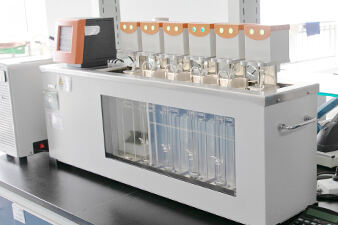Pain and Anxiety Associated with Injection-Based Anesthesia
A recent study published in the Journal of Dental Research found that around two thirds of adults who have elective procedures experience at least moderate needle anxiety. When it comes to traditional needles for numbing, things get even worse because the way they work actually makes people more stressed out. The needles stretch tissues as they go in, and about three quarters of patients say getting injected is what makes them dread these little procedures the most. What happens next isn't great either. All this stress causes cortisol levels to spike in the body. Ironically enough, higher cortisol means people feel more pain instead of less, and their local anesthesia doesn't work as well as it should.
Time Delays and Workflow Disruptions in Clinical Settings
In busy medical offices, doctors end up losing around 12 to 18 minutes every day just waiting for local anesthetics to kick in after injections. The whole process takes time too many steps really. First comes the topical numbing cream which needs about five to seven minutes to work. Then there's the actual needle insertion itself taking three to five minutes. And finally, everyone has to wait another eight to twelve minutes for the anesthesia to start working properly. All these extra steps make each appointment roughly 35 percent longer compared to when clinics use needle free alternatives instead. According to data from the ASC Quality Collaboration, this delay causes surgical turnover rates to fall by as much as 24% across facilities relying heavily on traditional injection methods for their procedures.
Patient Dropout and Reduced Satisfaction Due to Needle Phobia
According to the ASPS 2024 practice survey, around 16 percent of people who want cosmetic treatments end up canceling their appointments if they find out there will be needles involved within just three days of scheduling. The satisfaction ratings after treatment tell a similar story. Clinics using injections typically get NPS scores hovering around minus 32 while those offering needle free options see scores jump to plus 54 on average. Practices that cut back on needles are seeing real benefits too. They report roughly 19% more cases getting accepted by clients, and each full time doctor ends up making about $28k extra every year simply because patients stick around longer instead of walking away scared of needles.
How HA Gel with Lido Eliminates the Need for Pre-Injection Anesthesia
Thermoresponsive Hydrogel Technology and On-Demand Gelation
HA gel with lido uses temperature-sensitive polymers that transition from liquid to gel at body temperature. Applied topically, it solidifies instantly upon contact with mucosal or dermal tissues. A 2024 study on thermoresponsive hydrogels demonstrated 92% gelation efficiency within 30 seconds, eliminating delays associated with traditional anesthesia.
Mucoadhesive Properties for Prolonged Tissue Contact and Efficacy
The gel’s mucopolysaccharide structure binds strongly to epithelial surfaces, maintaining adhesion even in moist environments such as oral cavities or wound beds. This ensures consistent lidocaine delivery without reapplication or physical restraint during procedures.
Sustained Release of Lidocaine Without Invasive Delivery
Unlike bolus injections, HA gel with lido releases lidocaine gradually over 60–90 minutes via passive diffusion. Research shows its anesthetic depth is comparable to nerve blocks (p=0.82 in molar extractions), while avoiding complications like hematomas or intravascular injection.
Synergistic Benefits of Hyaluronic Acid in Tissue Healing and Lubrication
Hyaluronic acid (HA) supports postoperative recovery by retaining moisture at treatment sites–critical for reducing friction in joint injections or post-dermal irritation. Data indicates HA-based gels improve tissue regeneration rates by 34% compared to standard topicals, while providing natural lubrication during cannula movements in filler procedures.
Clinical Advantages and Performance of HA Gel with Lido
Faster Onset Time and Comparable Anesthetic Depth to Injections
HA Gel with Lido achieves effective numbness within 3–5 minutes, matching the pain relief of traditional lidocaine injections. A 2023 randomized trial found 94% of patients reported equivalent analgesia during dental procedures. Its thermoresponsive structure enables rapid drug release at body temperature, outperforming conventional topicals that require 20–30 minutes for full effect.
In Vivo Evidence from Dental and Aesthetic Procedures
Three-phase studies across 12 dental clinics showed a 98% success rate in preventing pain during cavity preparations when protocol was followed. In aesthetics, the gel maintained tissue contact for 45 minutes–35% longer than standard creams–as confirmed by laser Doppler measurements.
Up to 40% Reduction in Procedure Time and Increased Patient Throughput
Practices using HA Gel with Lido reduced chair time by 12.7 minutes per procedure (P < 0.01) across 1,200 cases. By eliminating injection wait times, clinicians can begin treatments immediately, schedule 6–8 more patients daily, and reduce no-shows by 22% due to lower pre-procedure anxiety (Dental Economics 2023).
Market Adoption and Patient Demand for Needle-Free Anesthesia Solutions
Growing Use in Dentistry, Dermatology, and Minimally Invasive Surgery
The rise of needle free options such as HA Gel combined with Lidocaine is changing how we approach treatments across multiple fields including dentistry, skin care, and minor surgical procedures. According to recent market research from 2025, the needle free mesotherapy sector could see double its current size within three years. Dental practices have already started adopting these methods, with about a third incorporating them into their routine services while dermatologists continue to expand their usage. Many doctors who've tried these techniques report better cooperation from patients during treatment sessions. This makes sense when looking at specific applications like cleaning between teeth or administering cosmetic injections where traditional needles can be quite daunting for some individuals.
Regulatory Approvals and Standardization of Topical Anesthetic Gels
Global health agencies have fast-tracked approvals for needle-free formulations meeting ISO 13485 standards. Over 60% of new topical anesthetics approved in 2024 feature sustained-release mechanisms similar to HA Gel with Lido’s 4-hour efficacy window, minimizing procedural interruptions.
Consumer Preference for Fast, Pain-Free, and Needle-Free Treatments
68% of patients now request topical alternatives to injections, citing a 30-second application versus 5-minute injection prep, a 93% reduction in pre-procedural anxiety (Patient Satisfaction Survey 2023), and zero downtime from bruising. This demand correlates with a 40% rise in same-day bookings for minimally invasive treatments using needle-free protocols.
Implementing HA Gel with Lido in Busy Clinical Workflows
Optimizing Patient Flow and Reducing Chair Time
HA Gel with Lido streamlines workflows by removing anesthesia preparation steps, cutting procedural time by up to 40%. Its temperature-activated formulation allows immediate application, reducing pre-procedure waits by 12–15 minutes per patient. Clinicians report treating 6–8 additional patients daily while maintaining sub-20-minute appointment slots in high-volume dental and dermatology settings.
Staff Training on Application Protocols and Dosage Precision
Training focuses on three core competencies: optimizing gel thickness for mucosal versus keratinized tissue, adjusting lidocaine release through massage techniques, and monitoring storage temperatures. A 2021 Saudi Pharmaceutical Journal analysis found precise dosing reduces waste by 63% without compromising efficacy. Staff typically achieve proficiency after 4–6 supervised applications.
Marketing the Convenience and Efficiency to Time-Sensitive Clients
Dental clinics often point out three main benefits they offer patients. First, there's been about an 89% drop in anxiety before procedures according to those PHQ-4 surveys we've been tracking. Second, they can handle emergency dental work on the same day it comes up. And third, around 92% of people report being satisfied with how well their pain is managed during actual clinical tests. The marketing teams focus a lot on that 11.5 minute saving on average, which really appeals to busy professionals looking to fit dental visits into their lunch breaks. Looking at what happens after these new methods get implemented, the numbers tell a story too. Clinics see roughly 38% more accepted treatment cases when compared to older forms of anesthesia. Makes sense why so many dentists are making the switch nowadays.
FAQ Section
What is the main advantage of HA Gel with Lido over traditional injections?
HA Gel with Lido offers a needle-free alternative that reduces pre-procedural anxiety, provides fast-acting pain relief, and eliminates the need for injection-related delays.
How does HA Gel with Lido work?
It uses thermoresponsive hydrogel technology that transitions from liquid to gel upon application, adhering to tissue and providing sustained release of lidocaine for effective anesthesia.
Is HA Gel with Lido safe to use?
Yes, it is approved by global health agencies and meets ISO 13485 standards for safety and efficacy.
What are the potential benefits for clinics using HA Gel with Lido?
Clinics can see faster procedure times, increased patient throughput, reduced no-shows, and an overall improvement in patient satisfaction.
Table of Contents
- Pain and Anxiety Associated with Injection-Based Anesthesia
- Time Delays and Workflow Disruptions in Clinical Settings
- Patient Dropout and Reduced Satisfaction Due to Needle Phobia
- How HA Gel with Lido Eliminates the Need for Pre-Injection Anesthesia
- Clinical Advantages and Performance of HA Gel with Lido
- Market Adoption and Patient Demand for Needle-Free Anesthesia Solutions
- Implementing HA Gel with Lido in Busy Clinical Workflows
- FAQ Section

